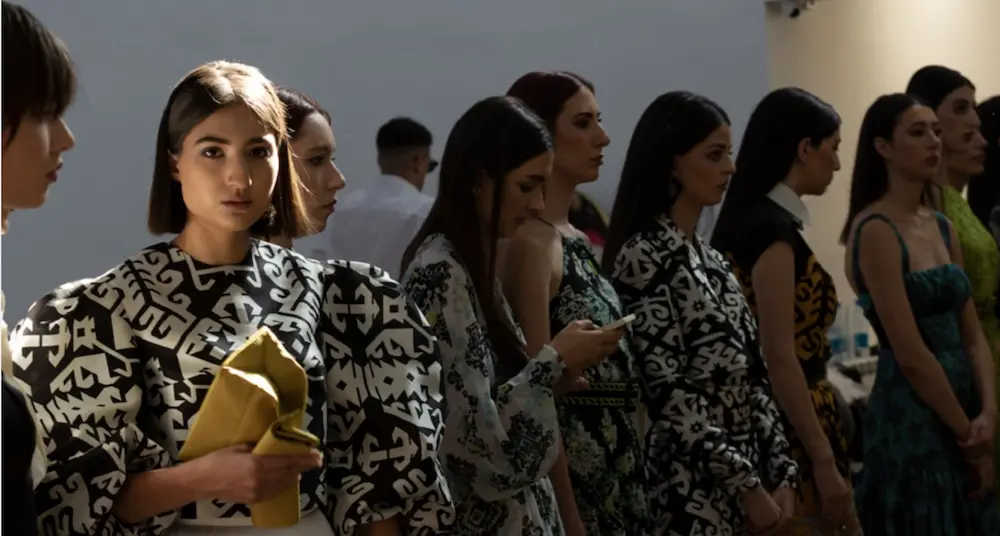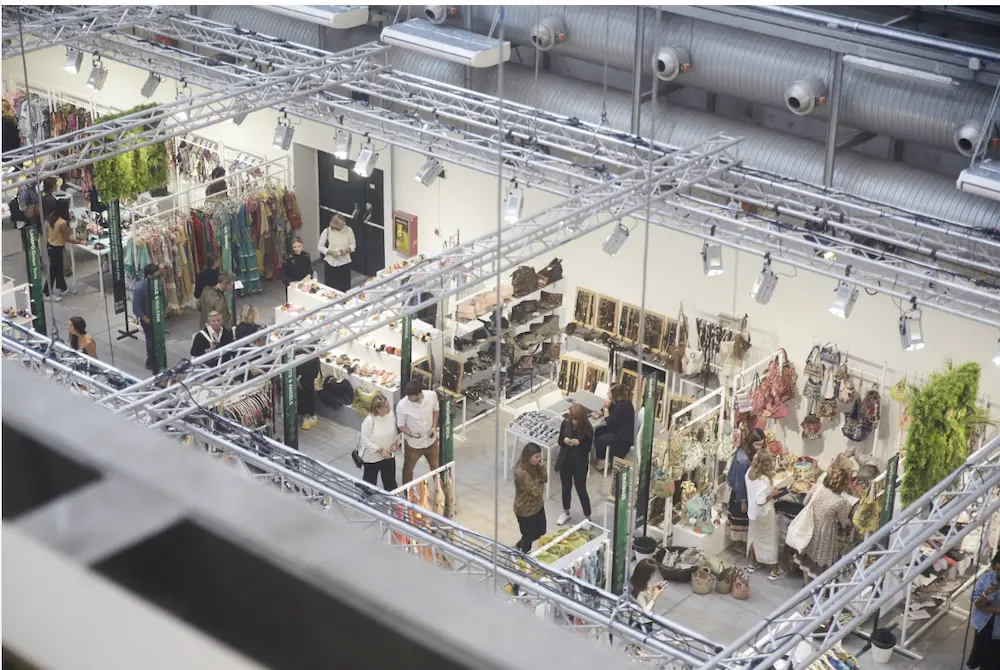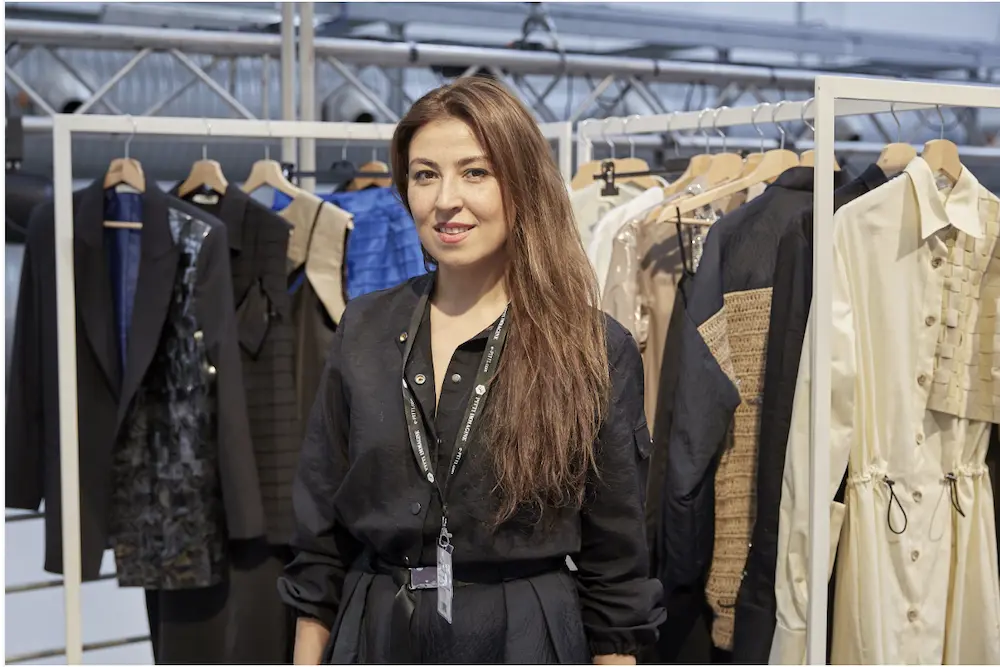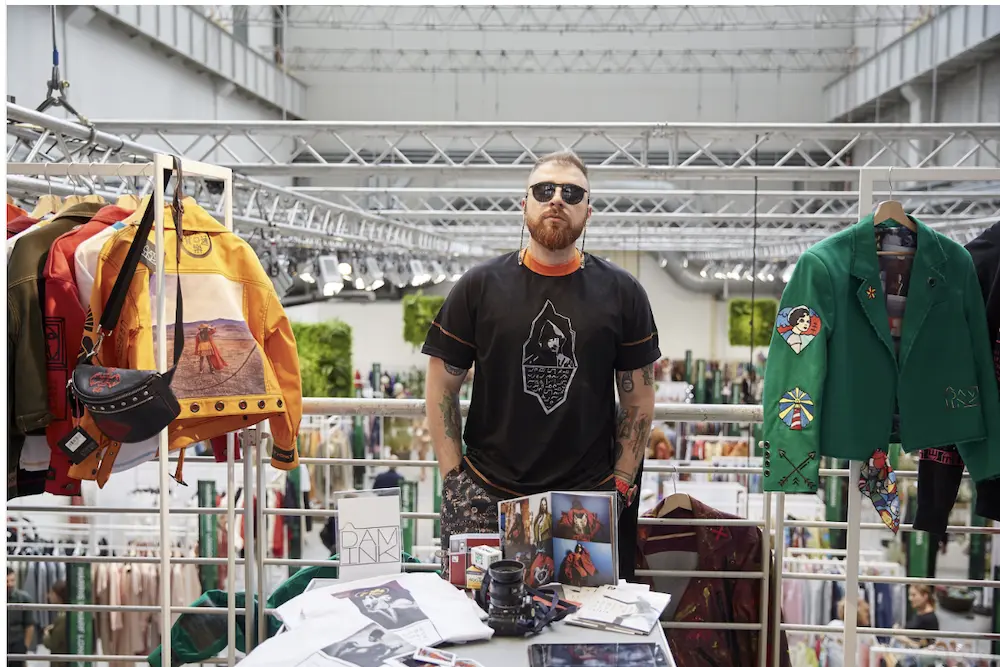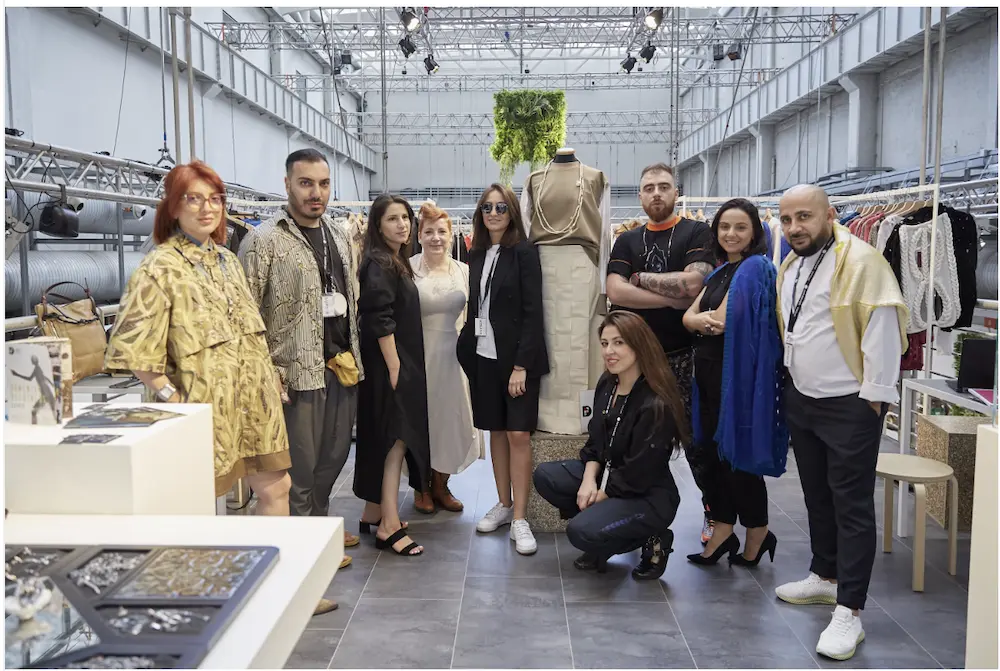In this exclusive interview, Elen Manukyan, Co-Founder and Team Leader of the Fashion & Design Chamber of Armenia (FDC), shares insights into the establishment and mission of the FDC. Founded in 2017, the FDC aims to bolster the Armenian fashion, textile, and design sectors, integrating them into both local and international creative ecosystems. Elen discusses the historical significance and potential of Armenia’s textile industry, the role of FDC in supporting designers, and future initiatives to promote sustainable growth in the Armenian fashion industry.
Can you tell us more about the founding of the Fashion and Design Chamber of Armenia (FDC) and its mission?
Fashion and Design Chamber NGO was founded in 2017 with the main mission to strengthen the Armenian fashion, textile and design sector by enabling it to be fully embedded in the local and international creative ecosystems.
Vision is to be the leading organization in Armenia that unifies fashion and design professionals to build a sustainable industry and position the Armenian creative sector as an ethical competitor on the international market.
FDC serves as a perfect root for designers to collaborate on other projects together. It provides an excellent opportunity to exhibit designers, their interpretation of Armenian culture and creativity, and to network with the wider creative community and beyond.
How do you evaluate Armenia’s textile and fashion industry in general and its potentials?
The clothing industry was a well-stablished, labour-intensive industry during Soviet times, employing about 150,000 people in Armenia, always accompanied by the creation of jobs and being developed in those countries/regions where, at one time or historical period, a certain demographic phenomenon arose.
Accordingly, this process began after the World War II, as a result of the demographic rise in Armenia and the consequent increase in the labour resources, when it was necessary to provide employment in the country and, accordingly, the active establishment of textile factories.
In the mid-80s, the industry was spurred on by the 1980 Olympic games and Armenia became one of the largest centers of the USSR textile industry with a large number of huge textile-manufactures in Yerevan, Gyumri, Vanadzor, etc.
It was all an echo of the post-war population explosion. Moreover, all these industrial associations were built on the principle of a central head enterprise and regional branches – rural workshops, the main purpose of which was to use surplus labour.
Another phenomenon that predetermined the development of the industry in Armenia was the holding of a large international technological exhibition of the textile industry in Armenia in the late 80s. It was attended by many of the world’s largest brands: Japanese, Italian, German manufacturers brought here the most modern machine tools, which, by agreement with the USSR, remained here. Thus, at the time of independence, the industry was already technologically advanced.
After Independence, the existing links and markets disappeared causing the collapse. Many factories were privatized and unable to restart production because of high transportation costs associated with the importing of raw materials, poor management, low access to financial resources, and lack of proper marketing.
Starting from 2000 the sector, which draws primarily on a labour force of women living in rural areas, started to record a growth and became priority export-oriented sectors in the export-led industrial strategy adopted by the Government of Armenia in 2011; the sector has exhibited strong growth during the period 2014-2019 becoming the fifth exporting sector with products worth around $256M exported in 2019.
Moreover, in 2008, the Republic of Armenia applied for and was granted the special incentive arrangement for sustainable development and good governance under the EU GSP Regulation for 2009-2011, further, this privilege was extended until the end of 2013, when new GSP regulation entered into force.
In 2014 Armenia was included in the list of countries eligible to receive additional trade preferences granted under the arrangement GSP+, which allowed to export 6200 names of products to the EU with zero tariffs. According to the EU data, Armenia used trade preferences granted under the GSP+ for about 47% of its total EU exports, including textile.
Armenia’s Textile Industry: Strategic Growth and Development
Today the industry is with a large number of workers; companies have stable relations with famous and major European brands and have mainly focused on production of outwear. At the same time there is a large number of home-based manufacturers, small and medium-sized enterprises that develop their fashion brands and sell products locally.
The apparel sector is considered as the priority areas for potential development, where the successful operation of newly opened and re-launched enterprises show that this sector can be developed further if basic prerequisites for sustainable ecosystem, design and modernization will structurally be established.
Being one of the few sectors where factories are spread across the country, contributing to both regional development and rural employment, the sector provides permanent employment opportunities for women in the region.
Having all this in mind, considering the potential increase of competition in export markets and driven by the desire to maintain a high export sector with a large number of jobs the Government of Armenia has set a goal to double the productivity of the economy by 2026.
Thus, considering the challenges existing in the sector as well as the ambitious vision to enlarge the export size and market, and increase the design and productivity of the own brands the strategy has been adopted in 2022 which will allow building a path for high-quality growth and development of the appeal and fashion industry in Armenia.
Obviously, the industry formed over the past decades is of strategic importance for the state due to the following factors:
- Significant number of jobs (including a large involvement of women in the sector),
- Presence of about 10 major players included in the list of the country’s largest taxpayers,
- Large investments in the sector over the past decades and high technical equipment and modernization of the industry,
- Export orientation of the industry and serious international connections,
- Extensive experience working with products of world brands.
Having this background, existing risks and challenges, global trends and tasks it was decided to build a strategy to ensure the qualitative development of the Armenian apparel industry through the growth of Value Added and productivity, as well as entering new markets with own brands, based on developing areas as:
Institutional solutions, human resources qualification, business processes, technological modernization, sustainability, own brand development and effective brand management, supply chain diversification, representation and visibility of Armenian brands in new consumer markets, balanced regional development, Complexity Index (PCI).
Thus, a new business model will be formed in the industry based on the development of production with high productivity, as well as the complexity and added value of products, and on the basis of the development of own brands with access to new markets. This model has a steady pace of development in the strategic perspective.
How many members you have and in which fields Armenia companies are more active?
Today FDC unites under its roof more than 250 Armenian designers, brands, textile companies, students and creatives related to the sector.
How does FDC support the needs and challenges of individual designers and fashion brands in Armenia?
Operations of the FDC are:
To provide a range of services that relate to sector’s social, economic, technological, marketing and communication issues which are relevant to the entire spectrum of business functions as a whole.
- To accompany the development of emerging brands by granting them financial and organizational support as well as overall expertise they need to structure and ease their development and exposure.
- To train in traditional and new skills in the fields of creation, management and know-how aiming to maintain, share, enhance skills and knowledge.
- To bring together fashion brands to foster collaboration and promotion of Armenian fashion and textile industry by combining traditional know how and contemporary technology.
- To build the bridge between designers, artists, photographers, fashion and art experts, journalists, fashion and art personalities from around the world.
- To organize fashion events, collection exhibitions, fairs, pop-up stores, presentations, showrooms, campaigns, etc.
Could you elaborate on FDC’s role in representing Armenian designers and brands in relations with suppliers, government officials, and other partners?
In order to achieve its goals and objectives, the FDC cooperates with public and private bodies, local and international organizations. FDC is helping to establish a network between Armenian fashion companies/designers and foreign buyers in order for the latter to get familiar with Armenian fashion designers and products.
Starting from 2017 FDC has been working with international organizations such as EU (EU4Business & SMEDA projects) GIZ (Private Sector Development in South Caucasus Programme), UK’s Good Governance Fund (GGF), UNICEF, Reconomy, CIPE, Swiss Cooperation Office South Caucasus, Swedish International Development Cooperation Agency, HELVETAS Swiss Interco operation, etc., educational research centers (local Universities and Colleges, Fashion Scout London, Fashion Eco Age, WGSN, etc.) by fundraising more than 3 mln. USD into the sector support programs.
Today FDC serves as a perfect network for the Government in lobbying different sector related legal and economic cases, as well as is directly engaged on sector strategy development. It provides an excellent opportunity to exhibit the Made in Armenia unifies platform, its interpretation of Armenian culture and creativity, and to network with the wider creative community and beyond.
Could you explain the partnership between FDC Armenia and Fashion Scout, and what opportunities it provides for Armenian fashion creatives?
Since 2019 FDC has started to expand the scope of its networking vision with the establishment of partnership with the UK fashion institution as Fashion Scout London and relevant agency Eco Age aiming to transfer the best know how and practices for sustainable and creative development of the in Armenia under UK Embassy support project.
The main objective of the project was to support to Armenian textile and fashion industry by upgrading technical and business skills, promoting international and local market penetration, new jobs creation and sustainable supply chain production based on recycling model.
FDC and Fashion Scout Partnership: Empowering Armenian Fashion Talent
Afer Collaboration between FDC & Fashion Scout has materialized through an ongoing partnership originated with shared vision of nurturing emerging talents. Martyn Roberts, the founder of Fashion Scout has been working with the Armenian designers since 2019 under “Creating a Sustainable Ecosystem for Armenian Fashion and Textile Industry” project funded by UK’s Good Governance Fund.
In the framework of the project sector related trainings and workshops have been organized after which based on results achieved the best 13 Armenian designers/brands participated in Fashion Scout Digital Showcase during London Fashion Week (COVID time).
This international exposure was a great step to create strong network with the wider fashion community, to exhibit their products, and gain experience on the international market.
The partnership has continued during Yerevan Fashion Week 2023 where Fashion Scout Armenia fashion talents award has been launched as the first young talents’ supporting platform with the aim to bring the UK visibility and opportunity for young talents/students/start-ups promotion as an essential step toward connecting Armenia to the UK best know-how of the global fashion world.
After which Fashion Scout Armenia 2023 winner participated in the Fashion Scout show during London Fashion Week. FDC is planning to continue this strong partnership in future and to deepen cultural dialogue between the UK and Armenia.
Can you share some insights into the upcoming Yerevan Fashion Week and its significance for the Armenian fashion industry?
Yerevan Fashion Week 2023 wraps up with resounding success, acknowledges feedback, and commits to continuous improvement. The highly anticipated Yerevan Fashion Week 2023, the first of its kind in Armenia, concluded with resounding success, leaving an indelible mark on the country’s fashion landscape.
Yerevan Fashion Week 2023: A Resounding Success
Over the course of the week, Yerevan Fashion Week celebrated the talent of 24 Armenian designers, who took center stage and unveiled their latest collections with passion and flair.
From emerging talents showcased on the esteemed Fashion Scout Armenia platform to established industry icons, each designer pushed the boundaries of creativity, presenting innovative and awe-inspiring collections. The diverse styles and influences showcased on the runway left the audience inspired and in awe of the rich and vibrant Armenian fashion scene.
Yerevan Fashion Week was not just about runway shows; it provided a platform for attendees to engage in a variety of activities that enriched their fashion experience. Showrooms displaying over 60 Armenian brands allowed visitors to explore and discover hidden gems.
Enlightening panel talks provided valuable insights into the industry, while thought-provoking exhibitions offered a deeper understanding of the creative process. Designer meet-and-greets allowed fashion enthusiasts to interact with their favorite creators, forging connections and fostering inspiration.
The after party and networking sessions provided opportunities for guests, including international press, experts, buyers, and influencers, to mingle and exchange ideas.
Yerevan Fashion Week marked a significant milestone in the elevation of the Armenian fashion industry to international acclaim. With its successful debut, the event has firmly established itself as an annual celebration of Armenian culture and creativity.
The event gathered substantial international attention, with the presence of prestigious press outlets such as Vogue Italy, Wear UK, ELLE Italy, Marie Claire Arabia, Lemile Germany, FAULT Magazine, L’Officiel, Fucking Young! BURO, Madame Figaro, Jamalouki Magazine, and many others. Their coverage ensured that every aspect of this unforgettable event received comprehensive exposure, solidifying its place in the global fashion landscape.
Hence, FDC is planning to continue in the same mood this year!
What are FDC’s future plans and initiatives to further support and promote the Armenian fashion industry?
FDC has laid out several strategic plans and initiatives aimed at further supporting and promoting the Armenian fashion industry.
Here are some key points that illustrate their future direction:
1. Educational Programs and Workshops: The Chamber plans to enhance its educational offerings by organizing more workshops, training sessions, and masterclasses with local and international experts.
This will help Armenian designers improve their skills and stay updated with global fashion trends and techniques.
2. Collaborations and Partnerships: Establishing partnerships with international fashion bodies and institutions to facilitate cultural exchange and collaboration. These partnerships can lead to joint projects, co-branded events, and cross-promotional opportunities.
3. Fashion Shows and Events: Increasing the frequency and scale of fashion shows and events, such as the annual “Yerevan Fashion Week,” to showcase Armenian designers’ work both locally and internationally.
These events provide a platform for designers to display their collections to a broader audience, including potential buyers and investors.
4. Market Expansion: Initiatives to help designers penetrate international markets, including participation in global fashion weeks, trade shows, and exhibitions.
5. Sustainability and Innovation: Promoting sustainable fashion practices among Armenian designers. This includes encouraging the use of eco-friendly materials, ethical production methods, and innovative design techniques that reduce environmental impact.
6. Support for Emerging Designers: Creating incubator programs and mentorship opportunities for emerging designers. These programs will offer guidance on business development, brand building, and navigating the competitive fashion industry.
7. Digital Transformation: Leveraging digital platforms and technologies to promote Armenian fashion. This includes enhancing online presence through e-commerce platforms, social media campaigns, and virtual fashion shows to reach a global audience.
These initiatives reflect the Chamber’s commitment to fostering a vibrant, innovative, and globally recognized Armenian fashion industry.



